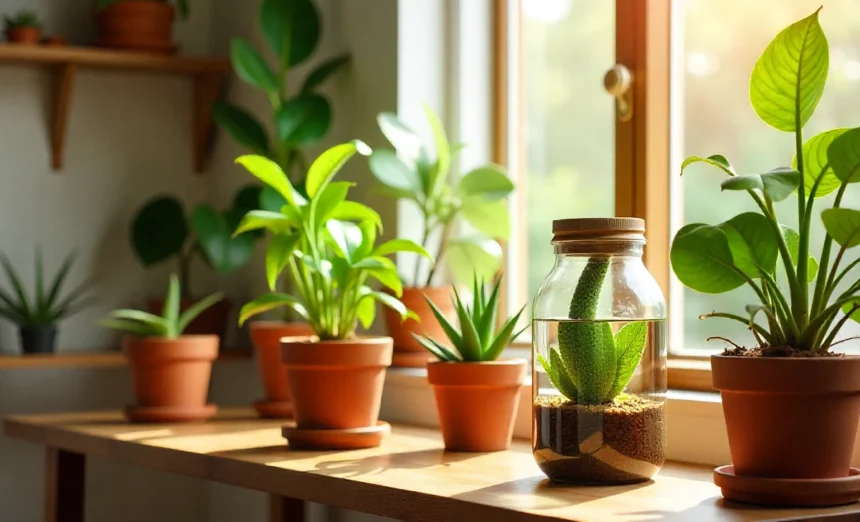Nothing’s worse than returning from a relaxing holiday to find your beloved fiddle leaf fig drooping or your snake plant looking more like a withered stick. If you’re a busy professional who loves plants but frequently travels for work or leisure, you’ve probably experienced this heartbreak before.
- Understanding Your Plants’ Water Requirements Before You Travel
- Self-Watering Systems: Set-and-Forget Solutions
- Creating the Perfect Environment for Unattended Plants
- Smart Technology Solutions for Plant Care
- Low-Maintenance Plant Varieties for Frequent Travellers
- Pre-Travel Plant Preparation Checklist
- Emergency Backup Plans and Plant-Sitting Solutions
- Troubleshooting Common Travel-Related Plant Problems
- Long-Term Strategies for Travelling Plant Parents
- Conclusion
The good news? You don’t need to choose between your wanderlust and your green thumb. With the right preparation and simple plant care systems, you can keep indoor plants alive when travelling without breaking the bank or relying on unreliable neighbours. Whether you’re gone for a weekend getaway or a month-long adventure, these practical solutions will ensure your leafy friends thrive in your absence.
Understanding Your Plants’ Water Requirements Before You Travel
Before implementing any travel care system, you need to understand how much water your specific plants actually need. Different indoor plants have vastly different watering requirements, and overwatering kills more houseplants than underwatering ever will.
Most popular Australian houseplants like pothos, monstera, and rubber plants prefer to dry out slightly between waterings. Succulents and cacti can go weeks without water, making them perfect for frequent travellers. On the other hand, ferns and peace lilies prefer consistently moist soil and require more attention.
Tip: Check your soil moisture by inserting your finger 2-3cm into the potting mix. If it feels dry at this depth, it’s time to water. Document this timing for each plant before your trip.
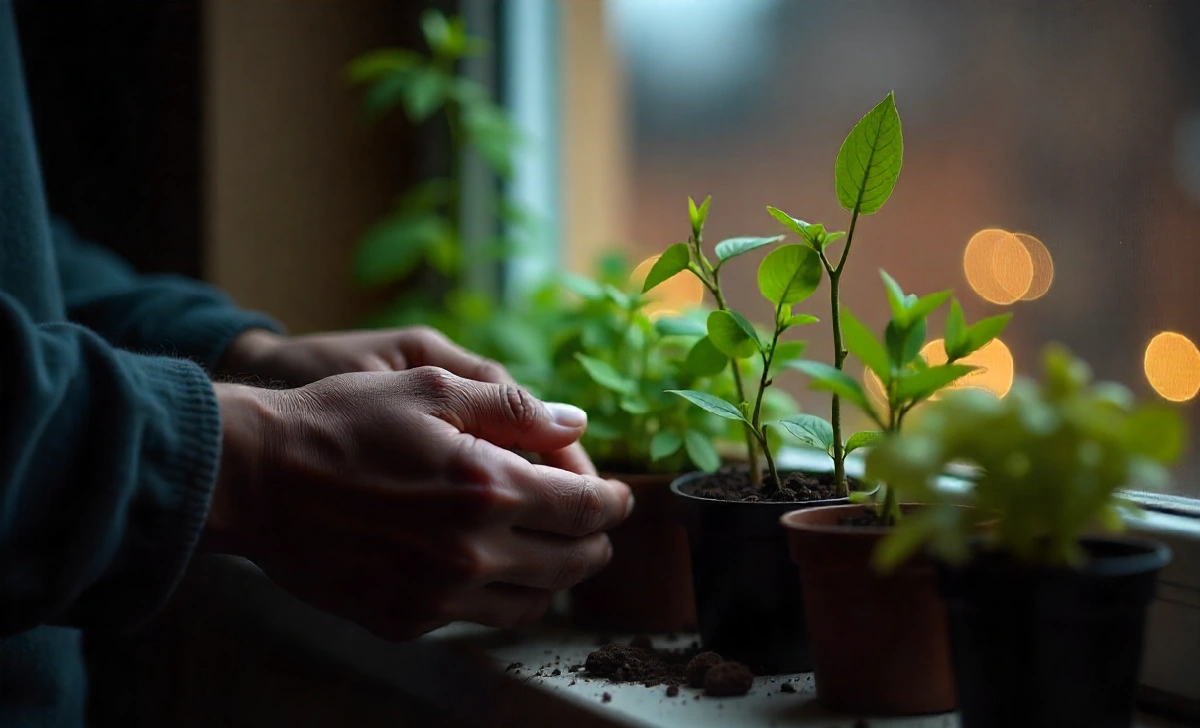
Self-Watering Systems: Set-and-Forget Solutions
Self-watering systems are your best friend when learning how to keep indoor plants alive when travelling. These automated solutions provide consistent moisture without the risk of overwatering that comes with asking neighbours for help.
DIY Water Bottle System
The simplest method involves clean plastic bottles with small holes poked in the cap. Fill the bottle with water, screw on the perforated cap, and insert it upside-down into your plant’s soil. The water will slowly release as the soil dries out.
This method works brilliantly for medium to large plants and can provide water for 1-2 weeks, depending on bottle size. I’ve successfully used 600ml bottles for my monstera deliciosa during week-long trips to Melbourne and Sydney.
Commercial Self-Watering Stakes and Globes
Plant watering spikes and glass globes offer a more aesthetic solution for visible areas of your home. These devices work on the same principle but look more intentional and stylish than plastic bottles.
Bunnings Warehouse stocks various options starting from around $15, and they’re reusable for multiple trips. The ceramic stakes work particularly well for smaller plants like herbs and succulents.
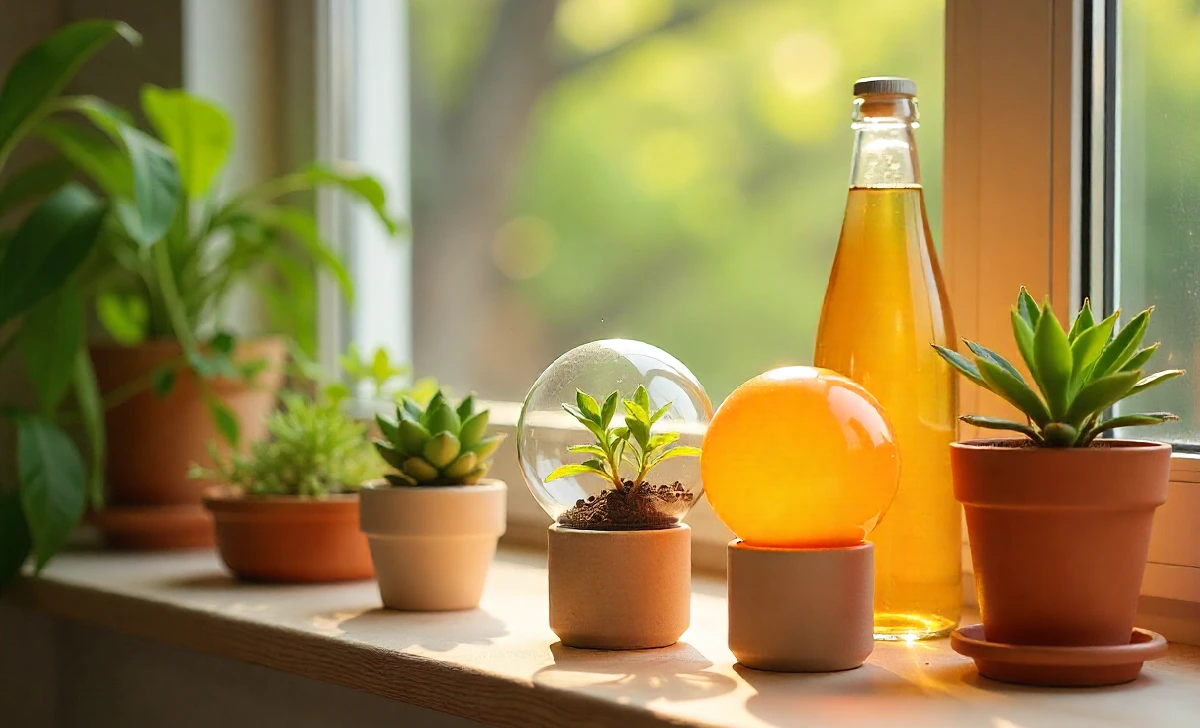
Creating the Perfect Environment for Unattended Plants
Environmental conditions play a crucial role in plant survival during your absence. The right lighting, humidity, and temperature can significantly extend how long your plants can thrive without direct care.
Optimal Light Management
Move your plants away from harsh direct sunlight, which increases water evaporation and can stress plants when they can’t be monitored daily. Bright, indirect light near north-facing windows works best for most houseplants during travel periods.
Consider using sheer curtains or blinds to filter intense Australian sunlight, especially during the summer months. This prevents leaf scorch while maintaining adequate light levels for photosynthesis.
Humidity and Temperature Control
Group your plants together to create a microclimate with higher humidity levels. Plants naturally release moisture through transpiration, and clustering them allows them to benefit from each other’s humidity output.
Keep your home’s temperature as stable as possible. Avoid completely turning off heating or cooling, as extreme temperature fluctuations stress plants more than consistent, slightly suboptimal temperatures.
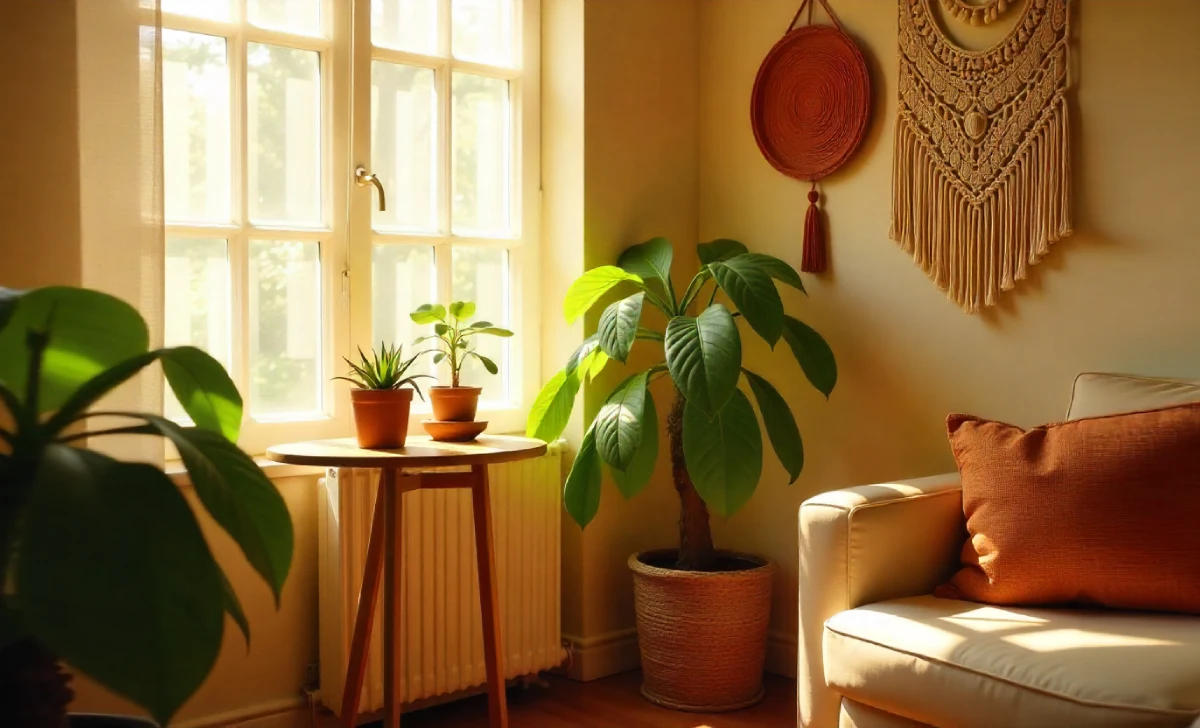
Smart Technology Solutions for Plant Care
Modern technology offers sophisticated ways to keep indoor plants alive when travelling, especially for tech-savvy professionals who want remote monitoring capabilities.
Automated Irrigation Systems
WiFi-enabled irrigation systems can water multiple plants on customised schedules. These systems connect to your home network and can be controlled via smartphone apps, allowing you to adjust watering schedules remotely.
Popular Australian retailers like Harvey Norman and JB Hi-Fi stock smart irrigation systems starting around $200. While more expensive initially, they’re perfect for frequent travellers with extensive plant collections.
Plant Monitoring Apps and Sensors
Soil moisture sensors connected to smartphone apps provide real-time data about your plants’ condition. Some advanced models monitor light levels, humidity, and temperature, sending alerts when conditions need adjustment.
The Xiaomi Plant Monitor, available through Australian electronics retailers, costs under $50 and provides comprehensive plant health data accessible from anywhere in the world.
Low-Maintenance Plant Varieties for Frequent Travellers
Choosing the right plants makes keeping indoor plants alive when travelling significantly easier. Some varieties naturally require less frequent watering and are more forgiving of irregular care schedules.
Drought-Tolerant Champions
Snake plants (Sansevieria) can survive 2-4 weeks without water and tolerate low light conditions. ZZ plants (Zamioculcas zamiifolia) store water in their thick stems and can handle extended dry periods with ease.
Pothos varieties are incredibly resilient and can survive in water alone for weeks. Simply place cuttings in glass jars before leaving, and they’ll often develop new roots by your return.
Succulents and Cacti Collections
Echeveria, jade plants, and barrel cacti store water in their leaves and stems, making them perfect for travellers. Most succulents prefer to be ignored rather than fussed over, thriving with benign neglect.
Australian native succulents like pigface and various Sedum species are particularly well-adapted to dry conditions and irregular watering schedules.
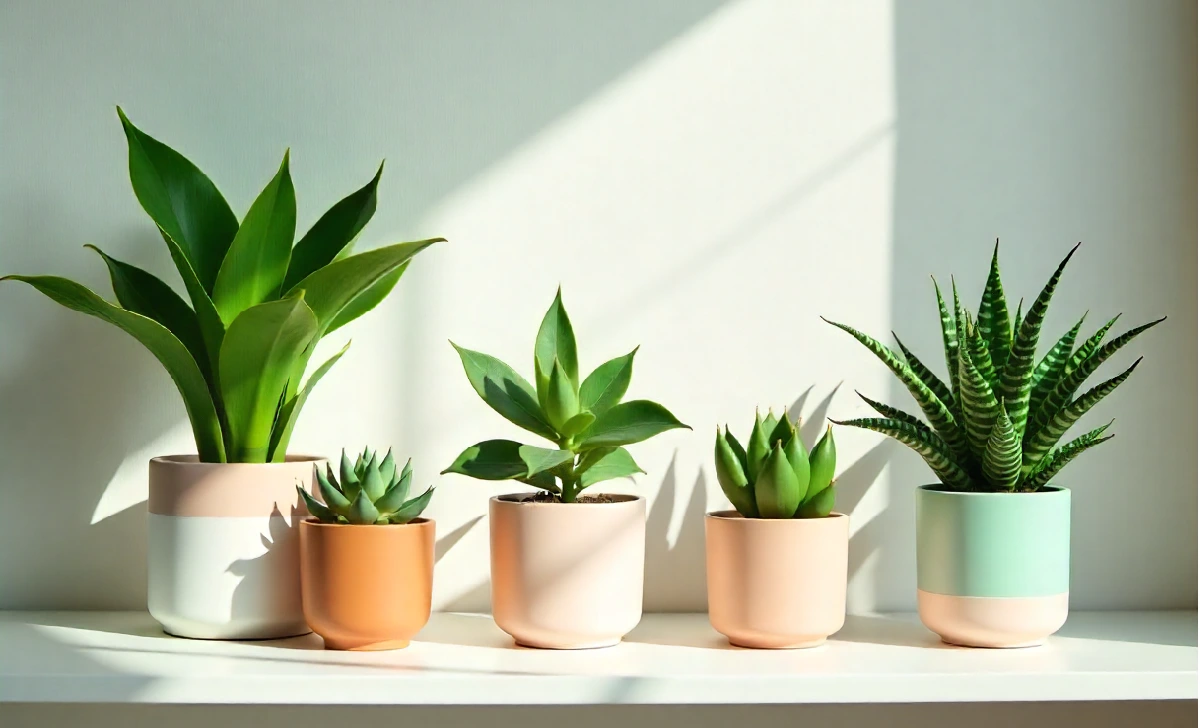
Pre-Travel Plant Preparation Checklist
Proper preparation is essential for successfully keeping indoor plants alive when travelling. A systematic approach ensures nothing is overlooked in your departure rush.
Deep Watering and Soil Health
Water your plants thoroughly 2-3 days before departure, allowing excess water to drain completely. This ensures soil is adequately moist without creating waterlogged conditions that promote root rot.
Check for signs of pests or disease before leaving. Address any issues immediately, as stressed plants are more vulnerable to problems during your absence.
Deadheading and Pruning
Remove spent flowers, yellowing leaves, and any dead or dying plant material. This reduces the plant’s energy requirements and prevents decay that could spread to healthy tissue while you’re away.
Pinch growing tips on fast-growing plants like basil and mint to slow their growth and reduce water requirements during your absence.
Emergency Backup Plans and Plant-Sitting Solutions
Even with the best automated systems, having backup plans ensures your plants survive unexpected extended trips or system failures.
Reliable Plant-Sitting Networks
Connect with local gardening groups through Facebook or community centres to find experienced plant-sitters. Many retired gardeners enjoy caring for others’ plants and often charge reasonable rates.
Consider reciprocal arrangements with neighbours or friends who also have plants. This creates mutual support networks and ensures both parties understand proper plant care.
Professional Plant Care Services
Several Australian cities now offer professional plant-sitting services, particularly in Melbourne, Sydney, and Brisbane. These services typically charge $20-40 per visit and provide experienced care for valuable or difficult plants.
Research and establish relationships with these services before you need them, ensuring they understand your specific plants’ requirements.
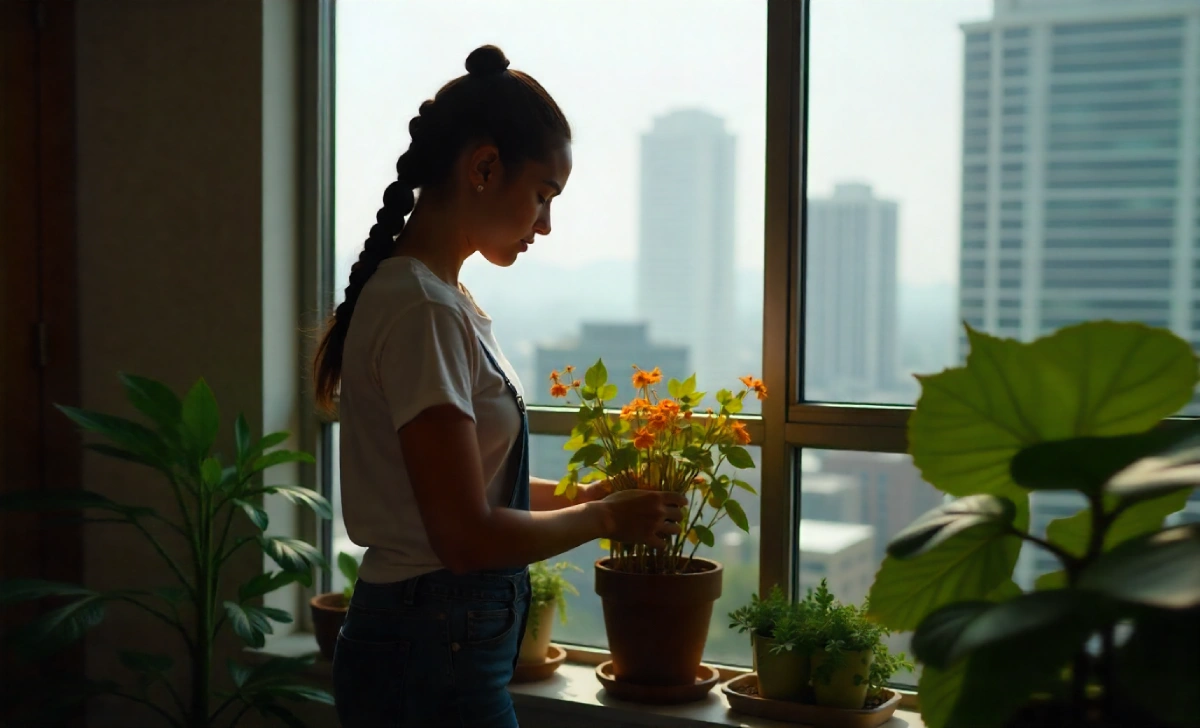
Troubleshooting Common Travel-Related Plant Problems
Understanding potential issues helps you prepare solutions and recover quickly from any problems that occur while you’re away.
Overwatering vs. Underwatering Signs
Overwatered plants develop yellow leaves, musty odours, and soft, dark roots. Underwatered plants show crispy leaf edges, wilting, and dry, pulling-away soil.
Upon return, assess each plant individually rather than applying blanket treatments. Some plants may need immediate water, while others might require soil replacement due to overwatering.
Recovery Strategies for Stressed Plants
Gradually reintroduce normal watering schedules rather than shocking plants with sudden changes. Stressed plants often need time to readjust to regular care routines.
Prune damaged foliage and provide optimal growing conditions to encourage new growth. Most healthy plants recover quickly from short-term neglect with proper post-travel care.
Long-Term Strategies for Travelling Plant Parents
Building sustainable systems for keeping indoor plants alive when travelling requires long-term planning and investment in the right tools and knowledge.
Seasonal Travel Considerations
Australian seasons significantly impact plant care requirements. Summer travels require more robust watering systems due to increased evaporation, while winter trips often need less intensive care.
Plan major travels during seasons when your plants naturally require less water. Many houseplants enter dormant periods during cooler months, making autumn and winter ideal for extended trips.
Building Your Plant Care Toolkit
Invest in quality tools and systems that serve multiple purposes. Good self-watering devices, moisture metres, and backup care supplies pay for themselves over time through saved plants and reduced stress.
Create detailed care instructions for each plant, including photos and specific requirements. This documentation helps both automated systems and plant-sitters provide appropriate care.
Conclusion
Learning how to keep indoor plants alive when travelling doesn’t require expensive equipment or complex systems. With proper preparation, the right plant varieties, and reliable watering solutions, you can maintain a thriving indoor garden regardless of your travel schedule.
Start by implementing one or two strategies from this guide, then gradually build your plant care system as you gain confidence and experience. Remember, most plants are remarkably resilient and can handle short-term variations in care better than you might expect.
Ready to travel worry-free? Choose your preferred watering system this weekend and test it on a short trip first. Share your experiences and favourite travel plant care tips in the comments below – your fellow plant parents will thank you!
